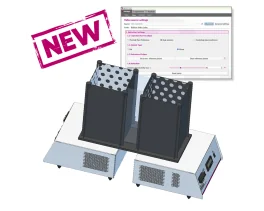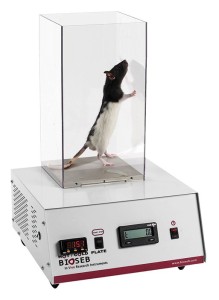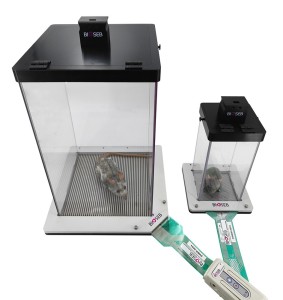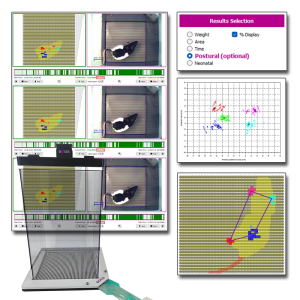Authors
C. Pitzer, R. Kuner, A. Tappe-Theodor
Lab
University of Heidelberg
Journal
Molecular Pain
Abstract
BACKGROUND
There is an urgent need to develop and incorporate novel behavioral tests in classically used preclinical pain models. Most rodent studies are based upon stimulus-evoked hindpaw measurements even though chronic pain is usually a day and night experience. Chronic pain is indeed a debilitating condition that influences the sociability and the ability for voluntary tasks, but the relevant behavioral readouts for these aspects are mostly under-represented in the literature. Moreover, we lack standardization in most behavioral paradigms to guarantee reproducibility and ensure adequate discussion between different studies. This concerns not only the combination, application, and duration of particular behavioral tasks but also the effects of different housing conditions implicating social isolation.
RESULTS
Our aim was to thoroughly characterize the classically used spared nerve injury model for 12 weeks following surgery. We used a portfolio of classical stimulus-evoked response measurements, detailed gait analysis with two different measuring systems (Dynamic weight bearing (DWB) system and CatWalk), as well as observer-independent voluntary wheel running and home cage monitoring (Laboras system). Additionally, we analyzed the effects of social isolation in all behavioral tasks. We found that evoked hypersensitivity temporally matched changes in static gait parameters, whereas some dynamic gait parameters were changed in a time-dependent manner. Interestingly, voluntary wheel running behavior was not affected in spared nerve injury mice but by social isolation. Besides a reduced climbing activity, spared nerve injury mice did not showed tremendous alterations in the home cage activity.
CONCLUSION
This is the first longitudinal study providing detailed insights into various voluntary behavioral parameters related to pain and highlights the importance of social environment on spontaneous non-evoked behaviors in a mouse model of chronic neuropathy. Our results provide fundamental considerations for future experimental planning and discussion of pain-related behavioral changes.
BIOSEB Instruments Used
Cold Hot Plate Test (BIO-CHP),Dynamic Weight Bearing 2.0 (BIO-DWB-DUAL)
Source :

 Pain - Thermal Allodynia / Hyperalgesia
Pain - Thermal Allodynia / Hyperalgesia Pain - Spontaneous Pain - Postural Deficit
Pain - Spontaneous Pain - Postural Deficit Pain - Mechanical Allodynia / Hyperalgesia
Pain - Mechanical Allodynia / Hyperalgesia Learning/Memory - Attention - Addiction
Learning/Memory - Attention - Addiction Physiology & Respiratory Research
Physiology & Respiratory Research











![Dynamic Weight Bearing 2.0 – Postural Module [Add-on]](https://bioseb.com/733-home_default/dynamic-weight-bearing-20-add-on-postural-module.jpg)
























 Pain
Pain Central Nervous System (CNS)
Central Nervous System (CNS) Neurodegeneration
Neurodegeneration Sensory system
Sensory system Motor control
Motor control Mood Disorders
Mood Disorders Other disorders
Other disorders Muscular system
Muscular system Joints
Joints Metabolism
Metabolism Cross-disciplinary subjects
Cross-disciplinary subjects CONFERENCES & MEETINGS
CONFERENCES & MEETINGS 

